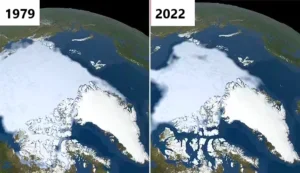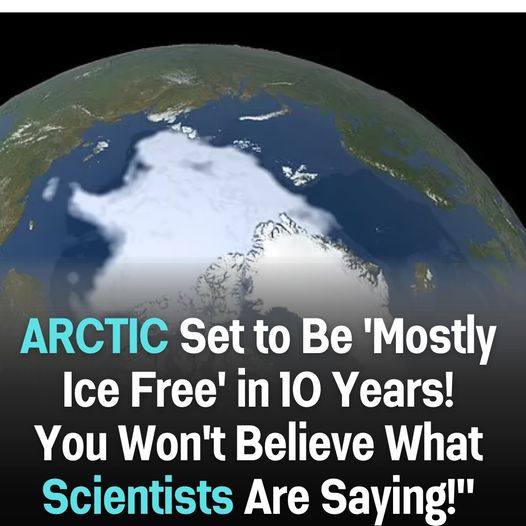Recent data from NASA’s satellite observations paint a concerning picture of the Arctic’s ice cover. The Arctic experienced its sixth-lowest minimum ice extent on record, while the Antarctic saw its smallest maximum ice coverage ever recorded. This worrying trend, ongoing for years, appears to be worsening.
NASA’s monitoring of Arctic sea ice since 1978 reveals a steady decrease, with projections suggesting potential ice-free conditions in September by the 2020s or 2030s. “Ice-free” doesn’t mean complete absence but less than a million square kilometers of ice coverage.
In 2023, the Arctic sea ice covered 1.63 million square miles. By the 2030s, it could shrink to about 24 percent of its 2023 size, regardless of emission scenarios. Scientists anticipate more common ice-free conditions by 2067, extending beyond September to include August and October. However, reducing greenhouse gas emissions could delay this milestone.

A study in Nature Reviews Earth & Environment underscores the urgency of emission reduction efforts, highlighting the significant impact of ice changes on wildlife. Polar bears face increasing challenges, while new shipping routes open up opportunities for commercial interests, posing challenges for marine mammals like blue whales.
Diminishing Arctic ice intensifies global warming by reducing the earth’s albedo effect, amplifying heat absorption and heatwave severity. Despite these projections, Arctic sea ice can regenerate relatively quickly if emissions decrease, underscoring the importance of swift action to mitigate climate change.



